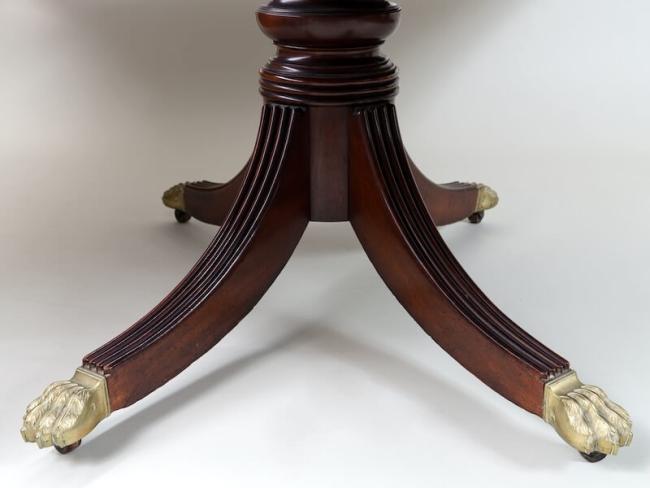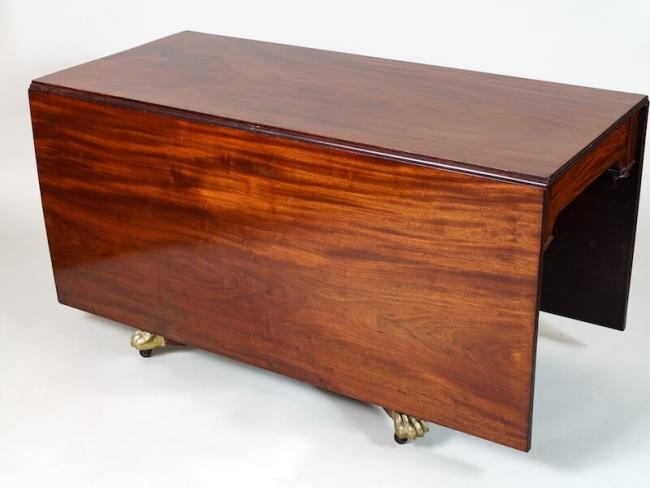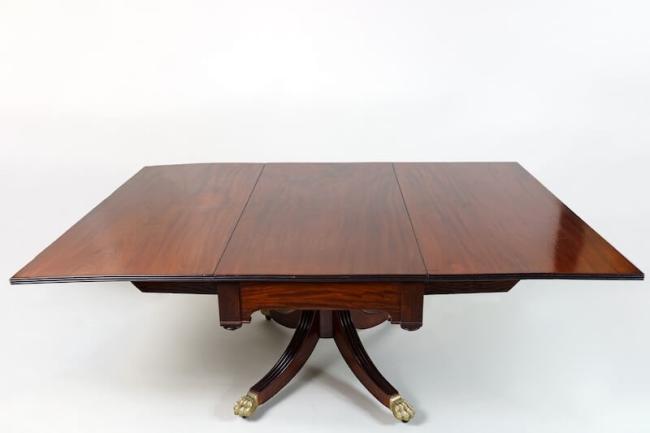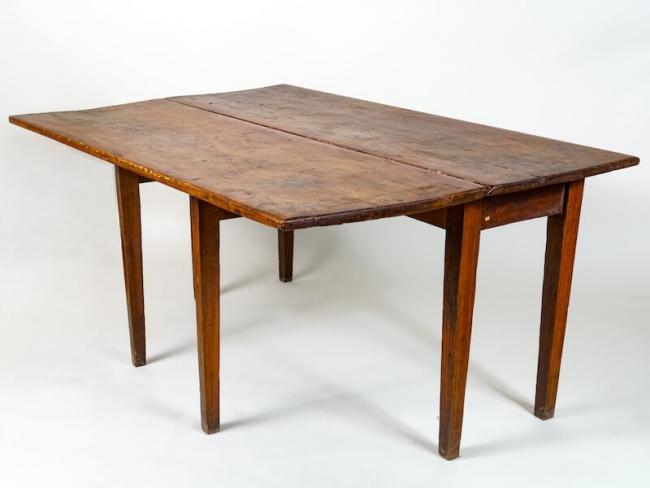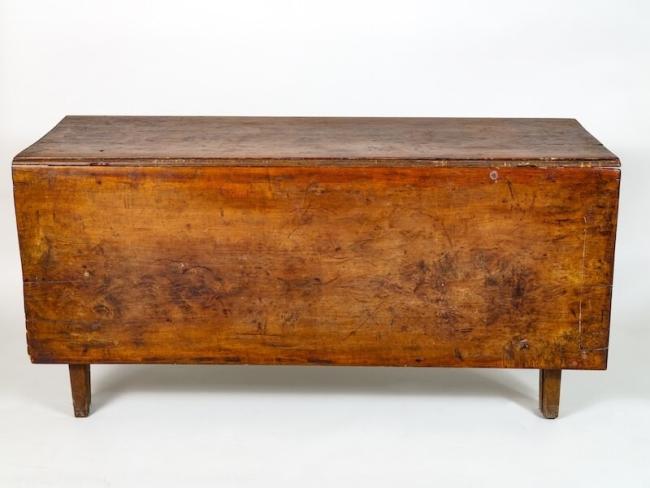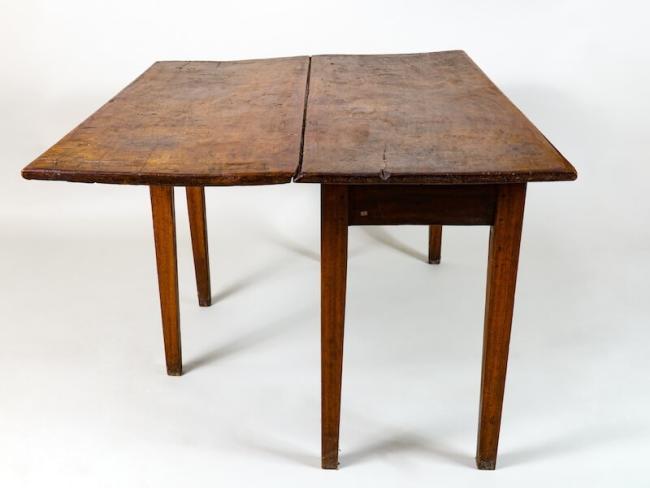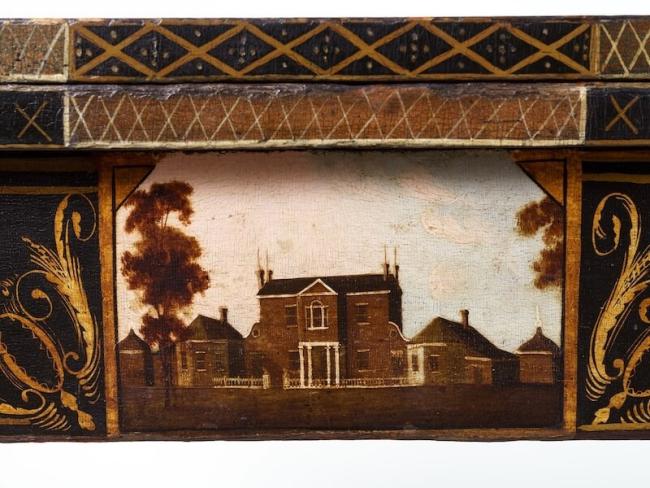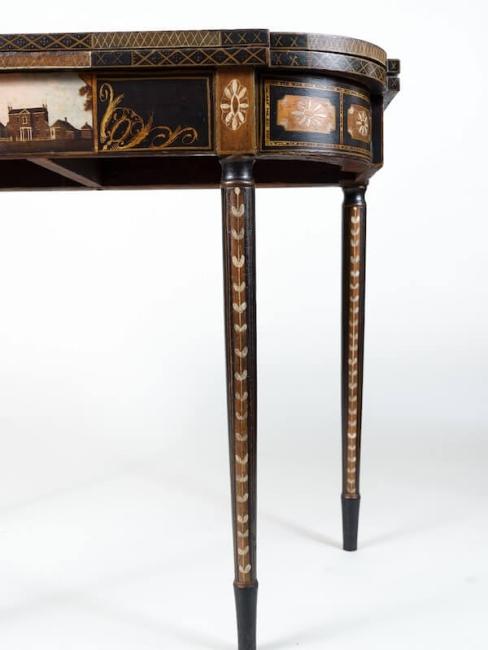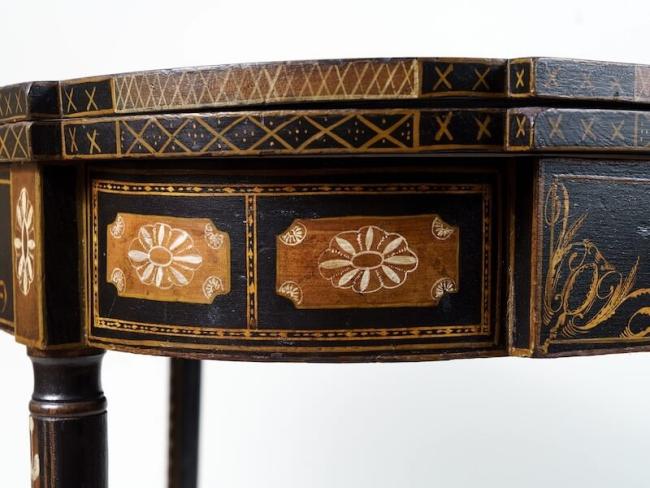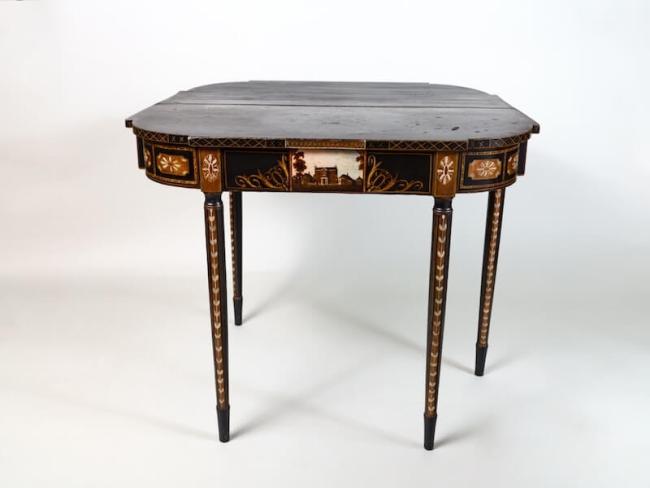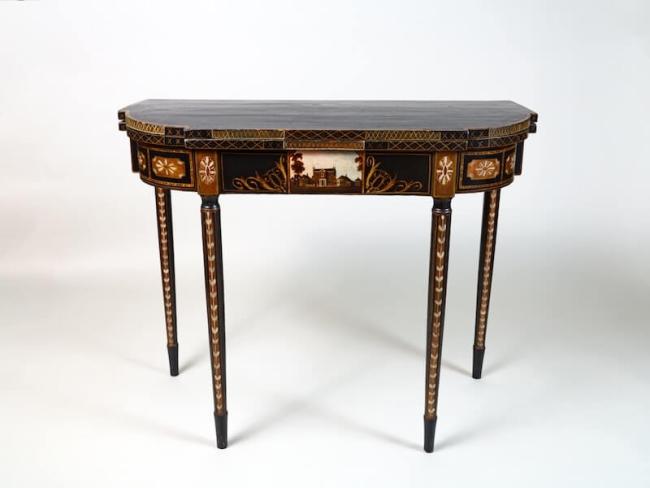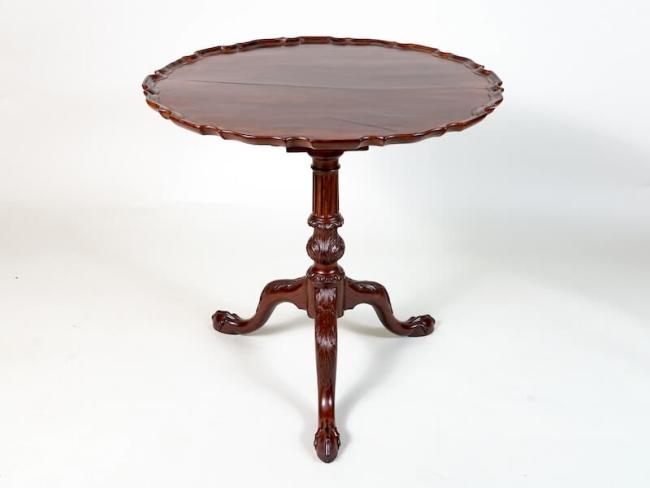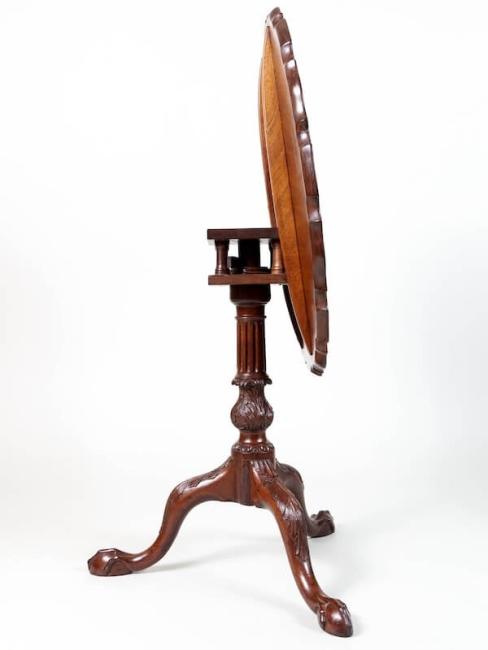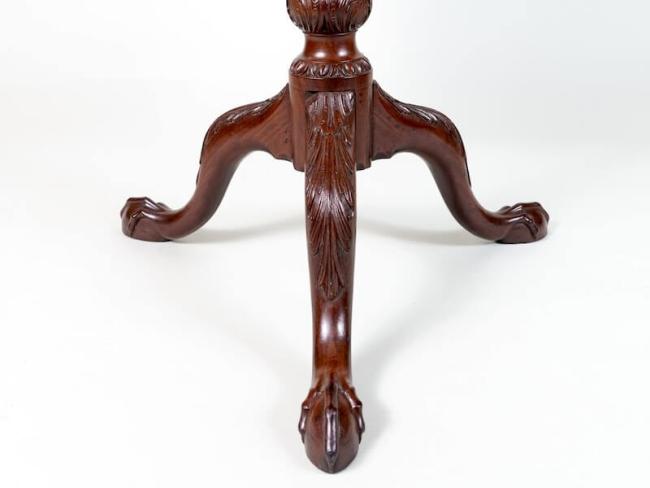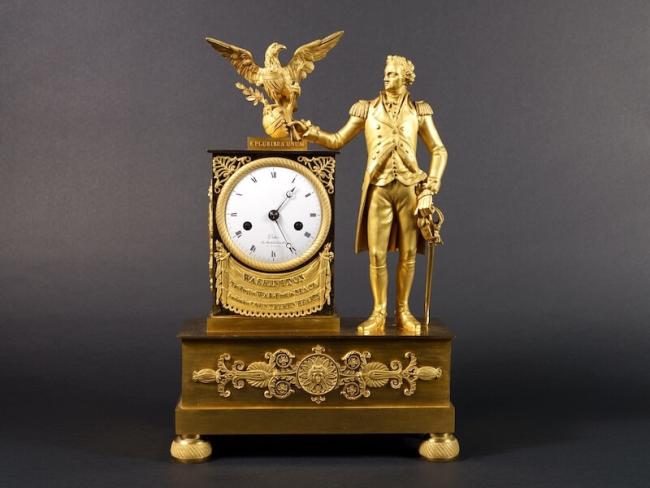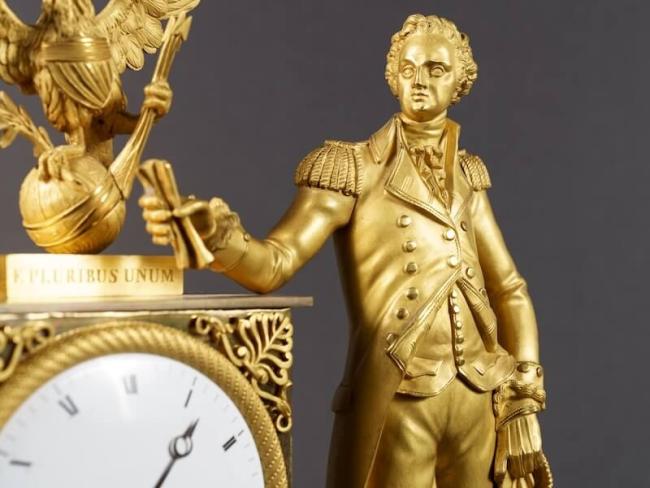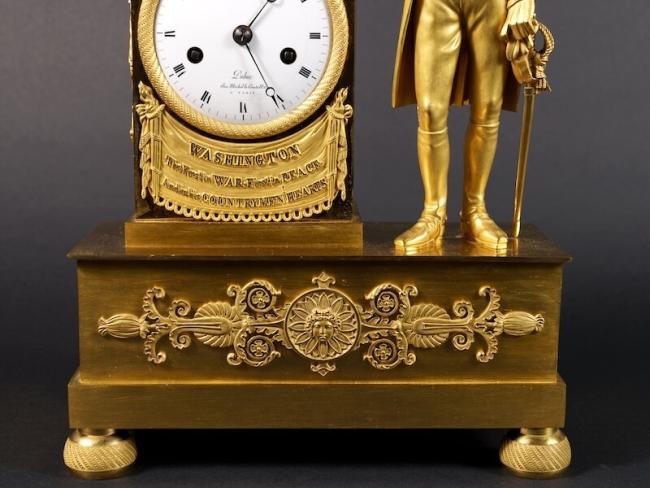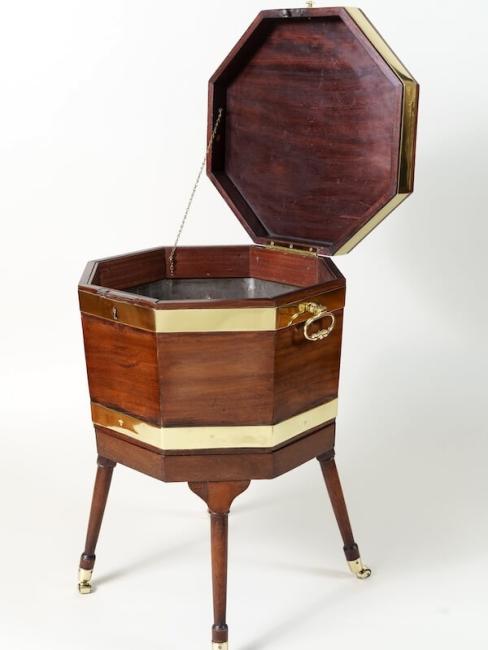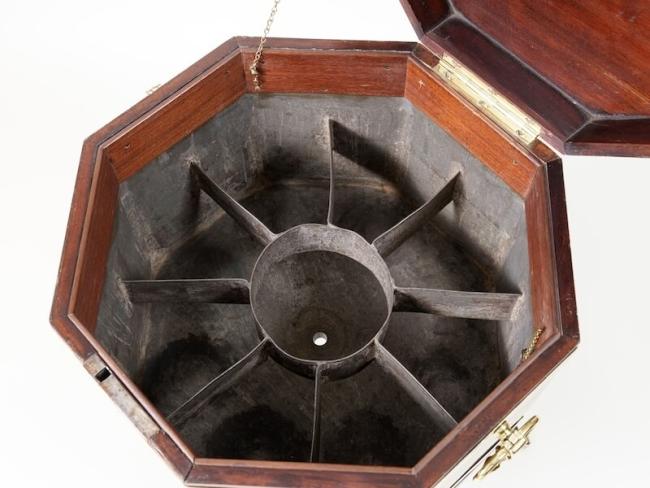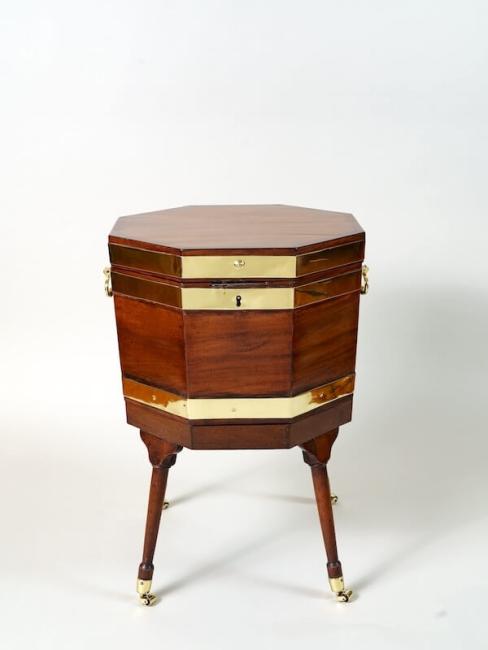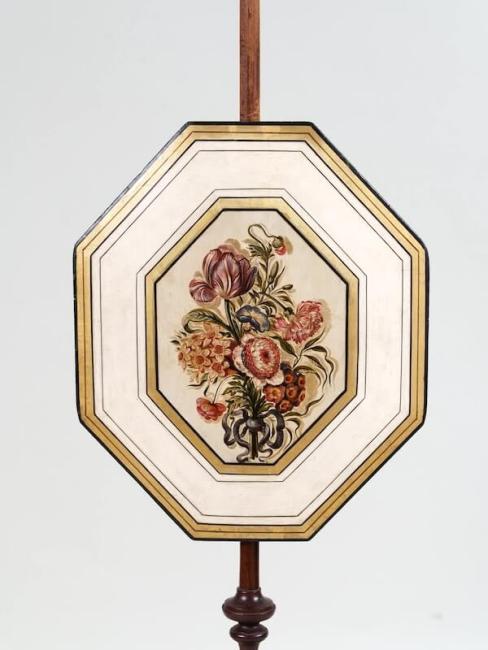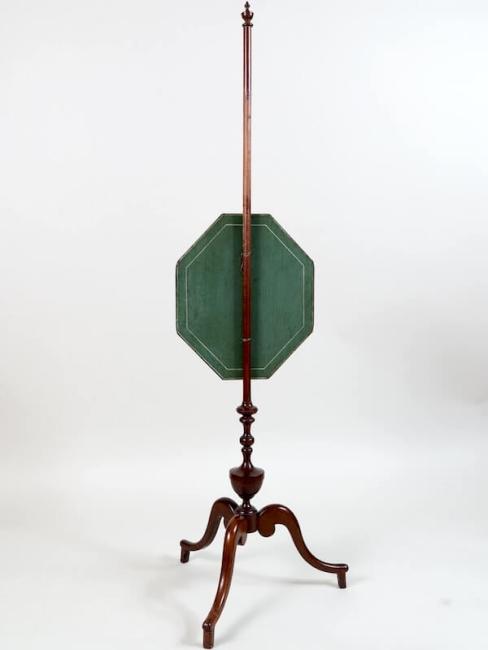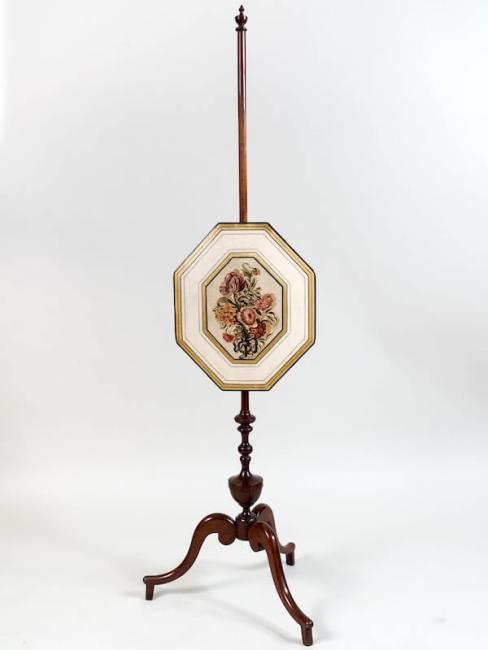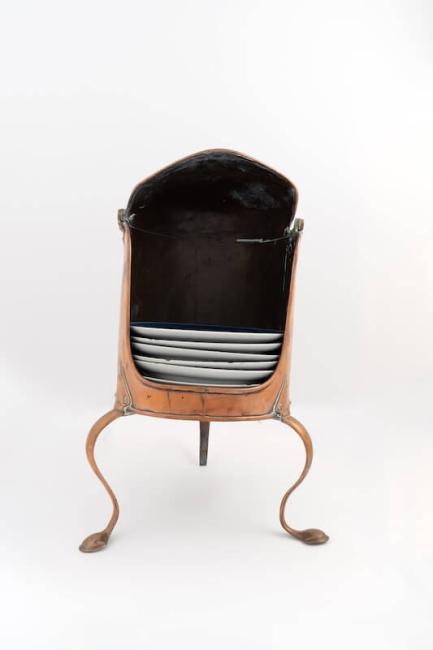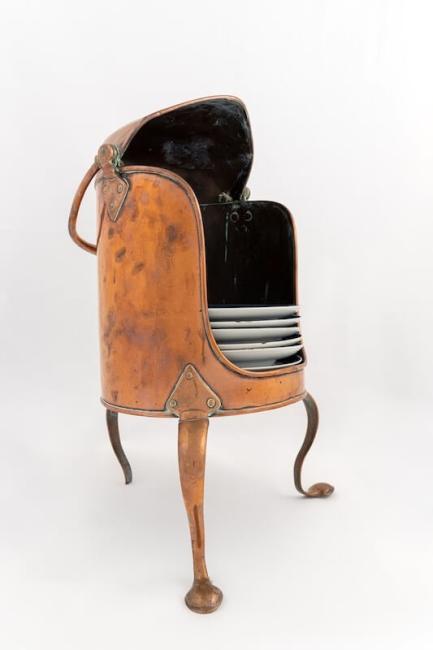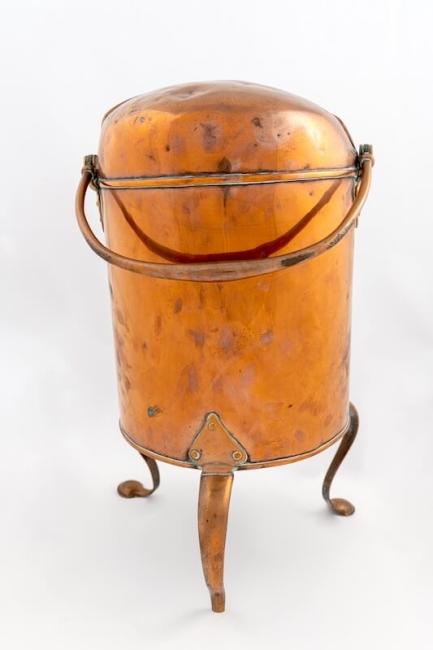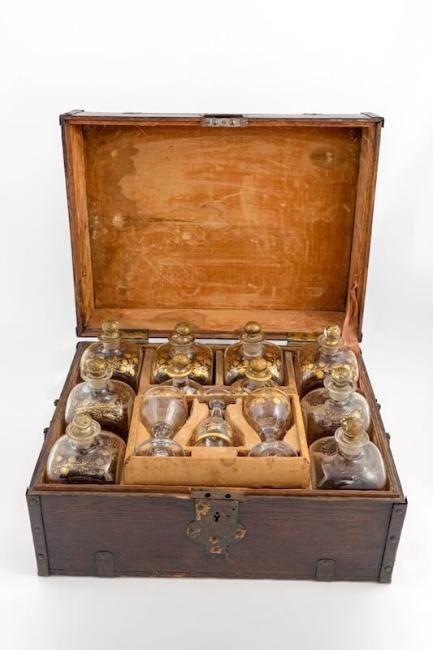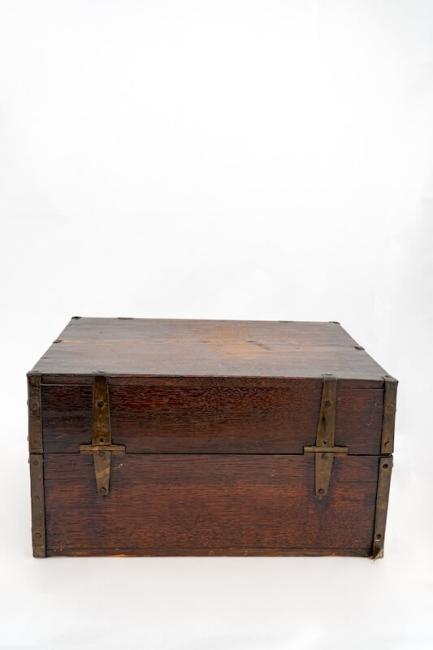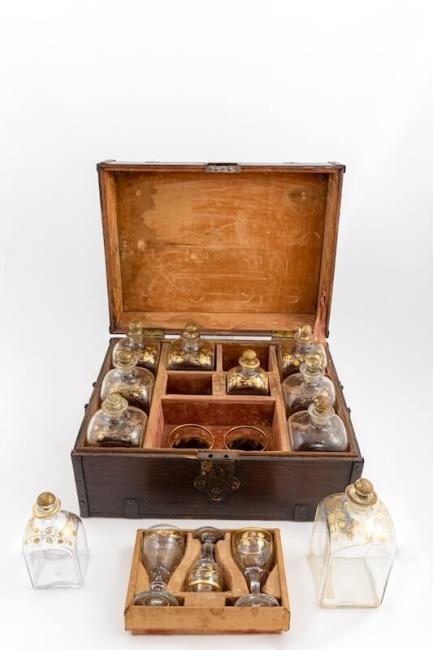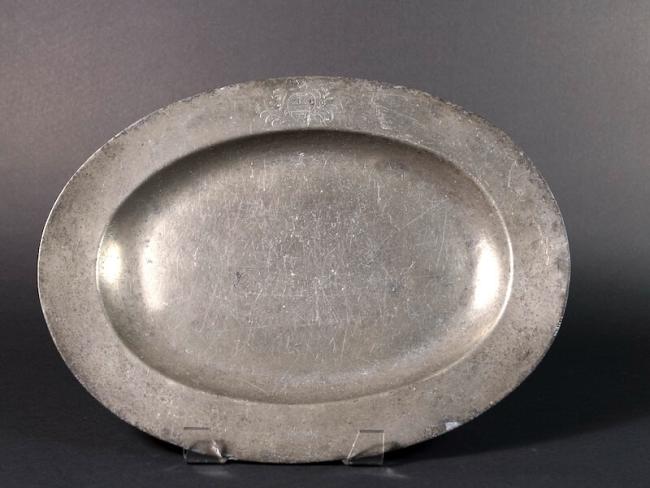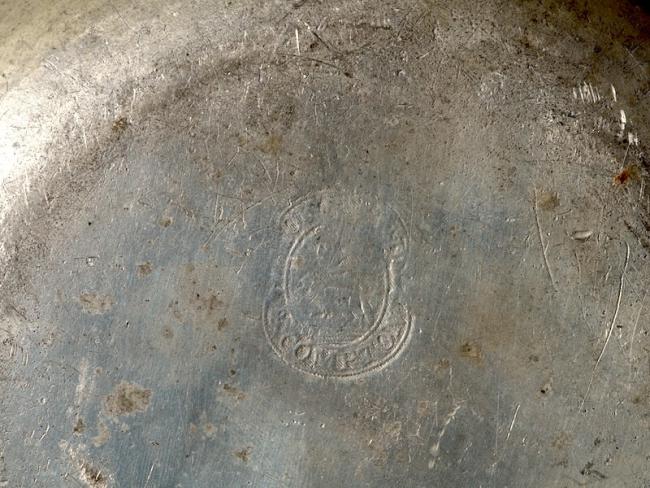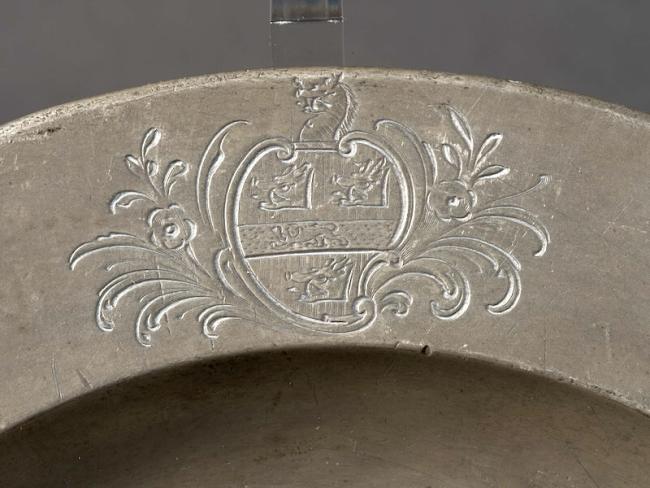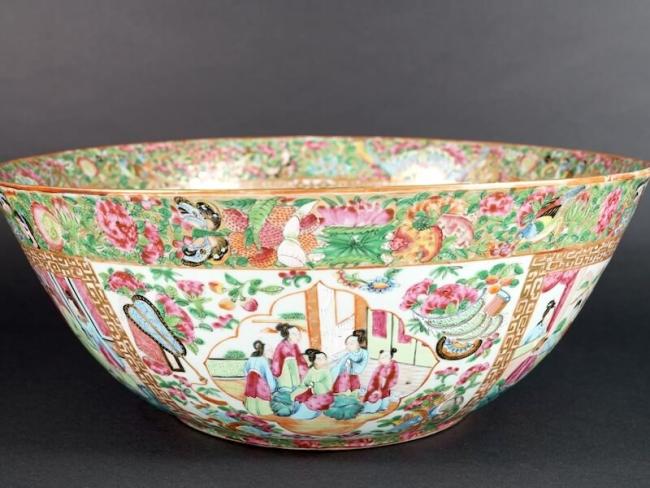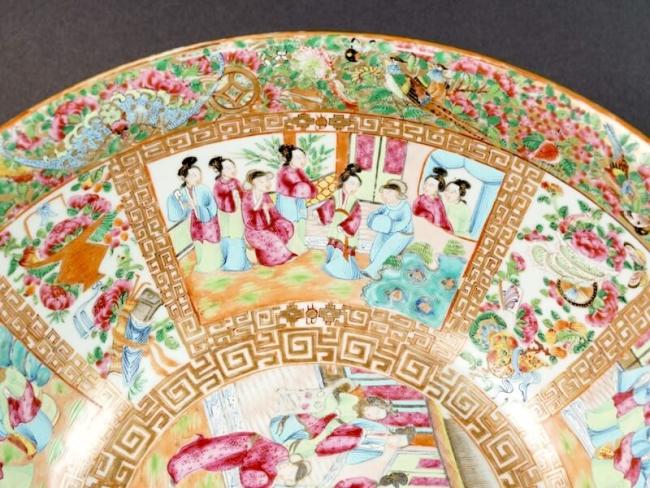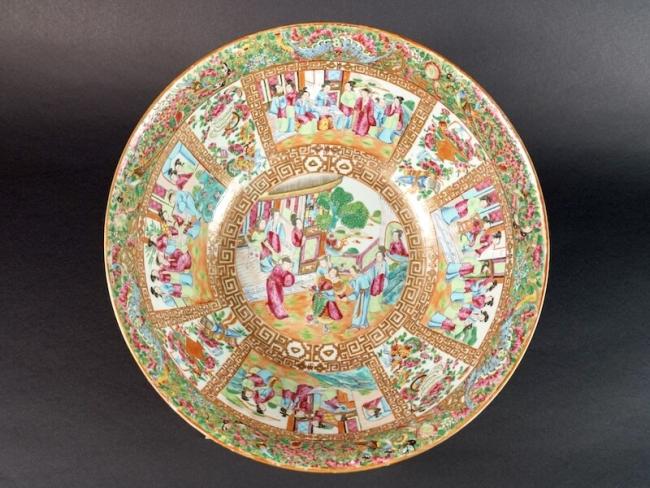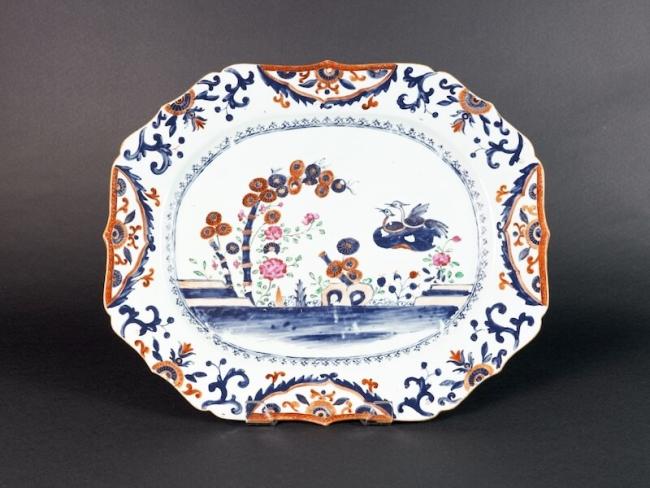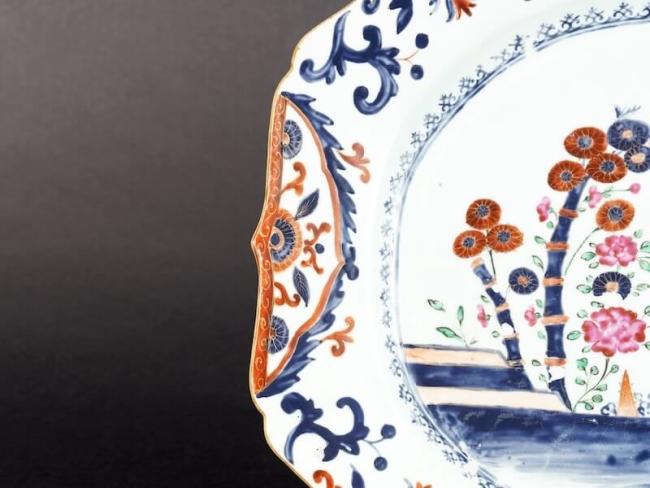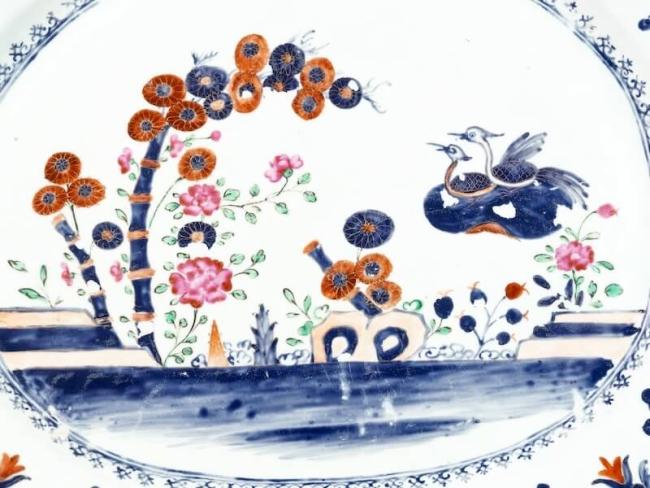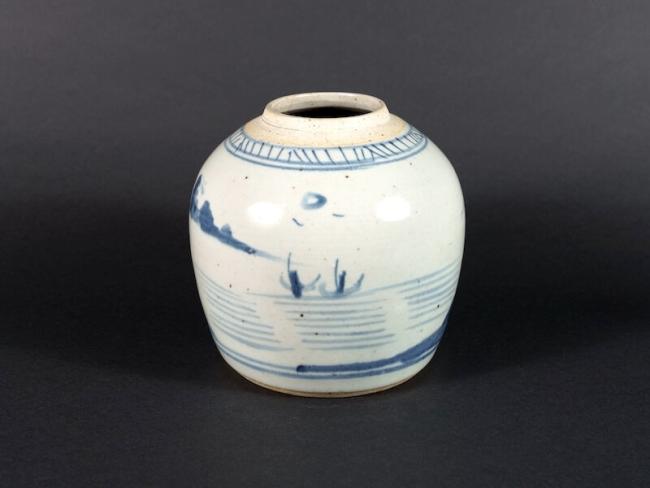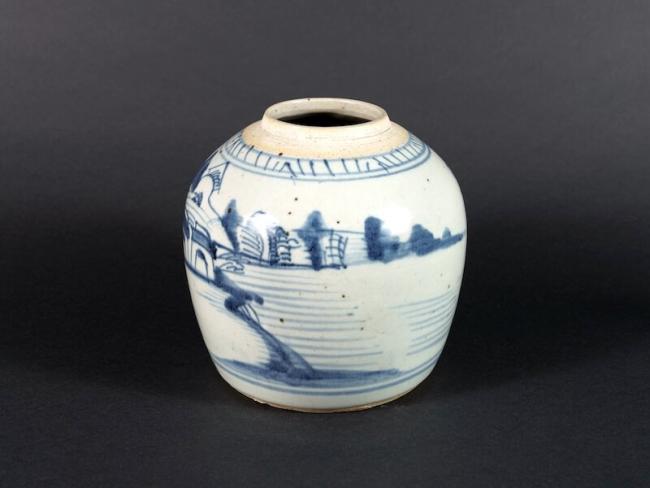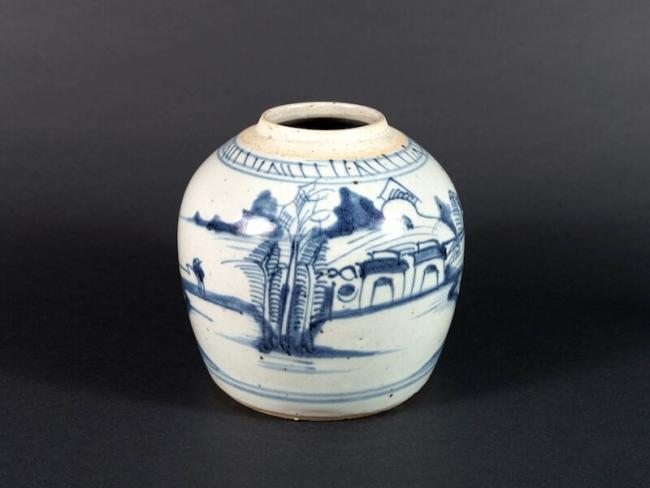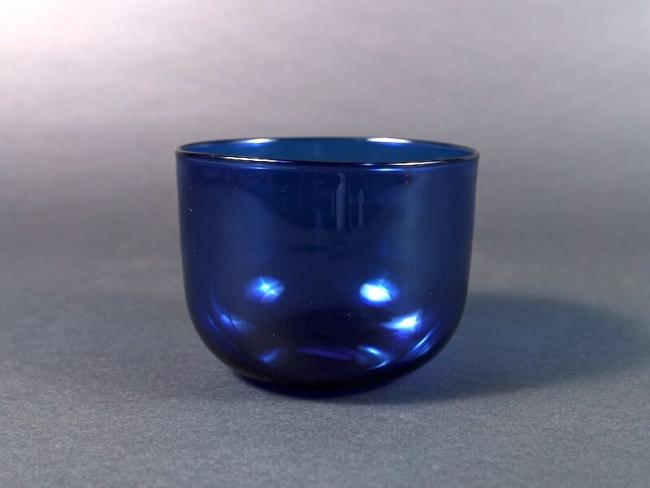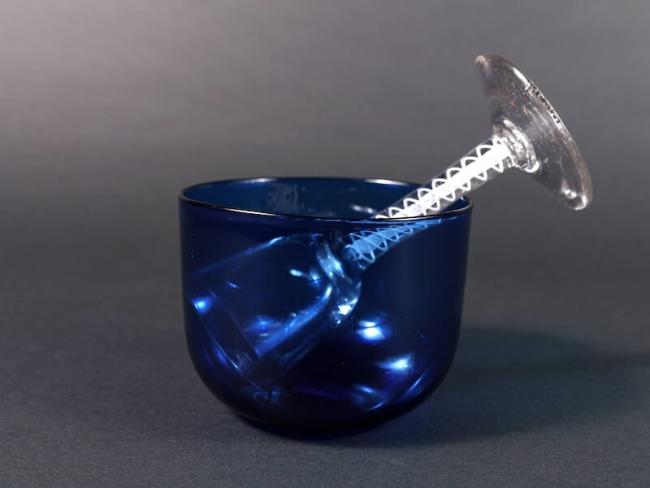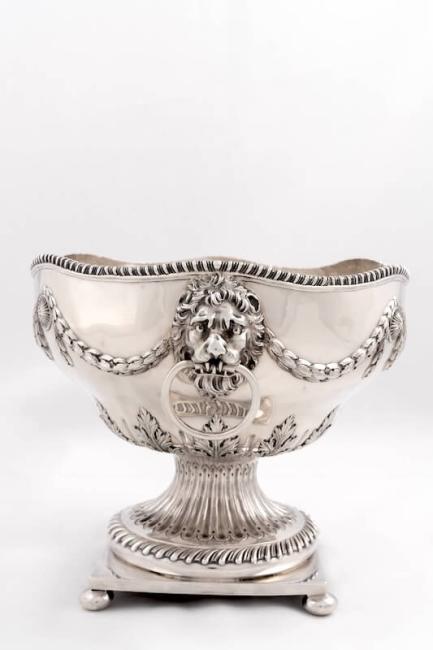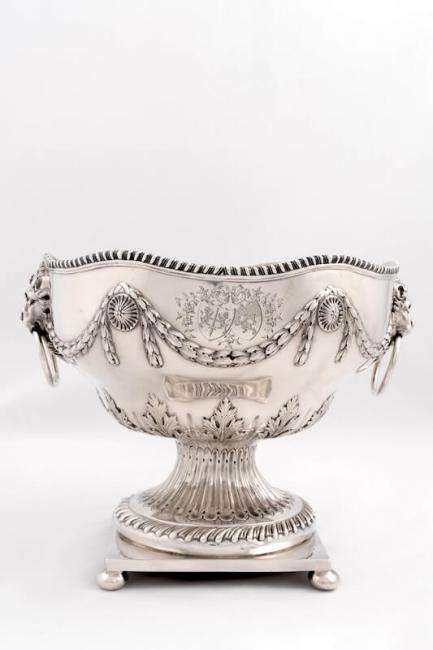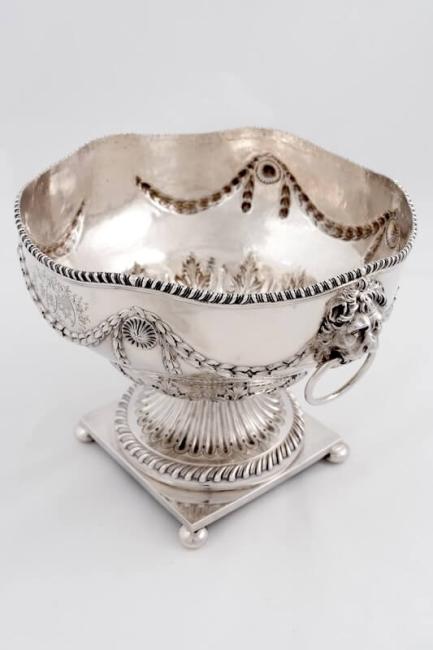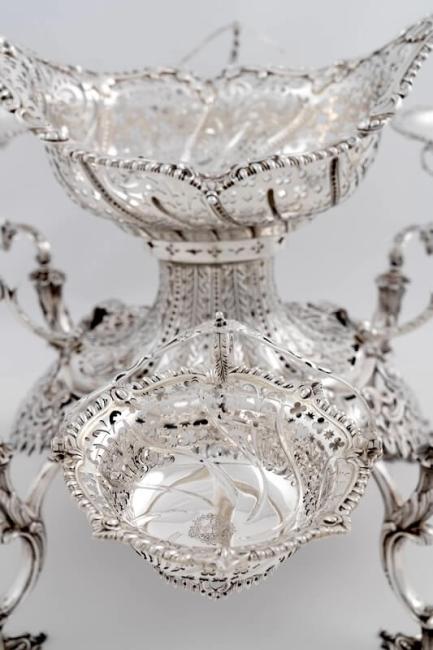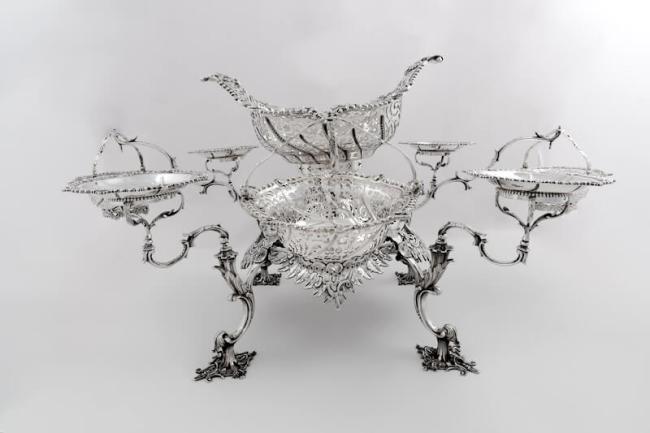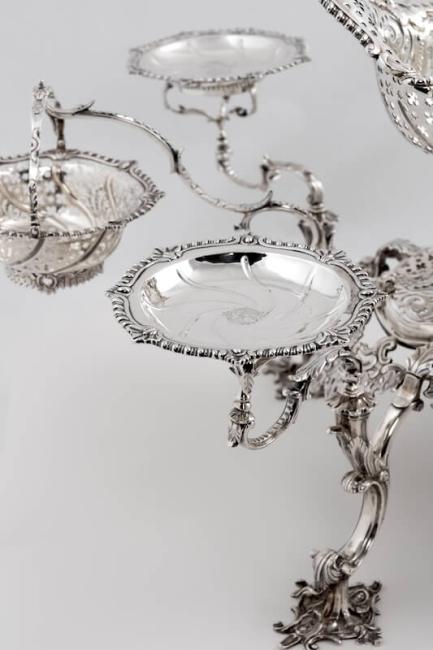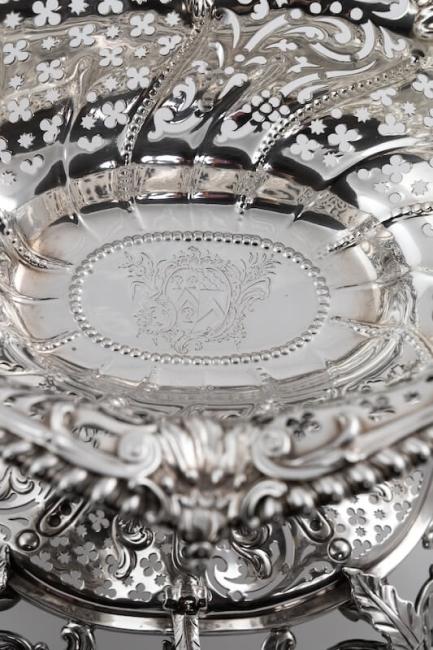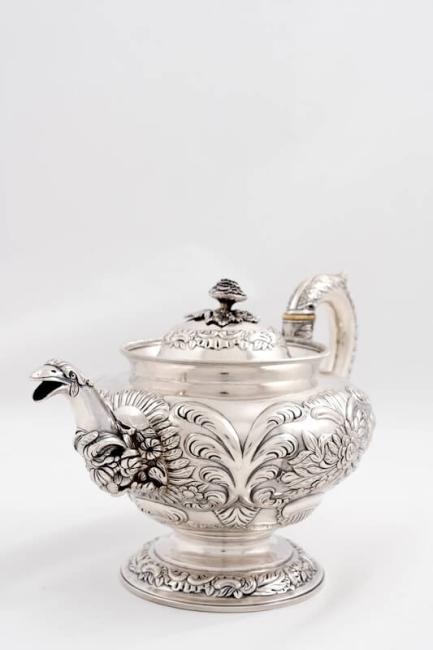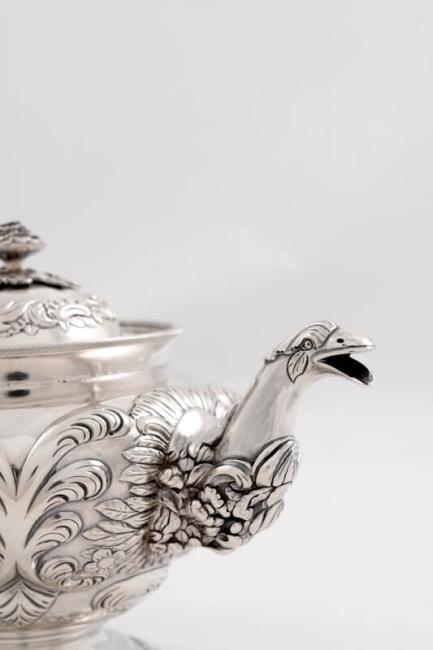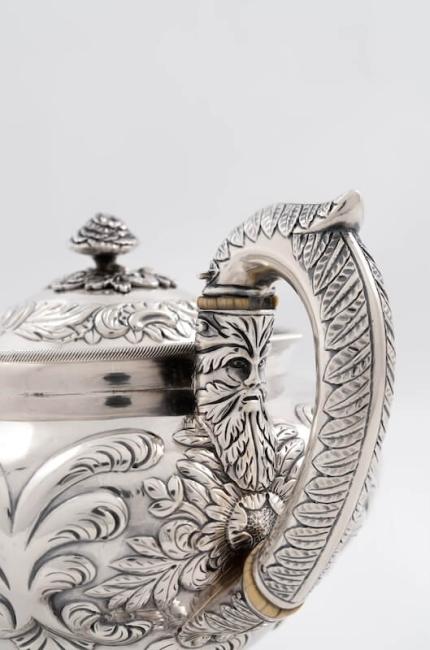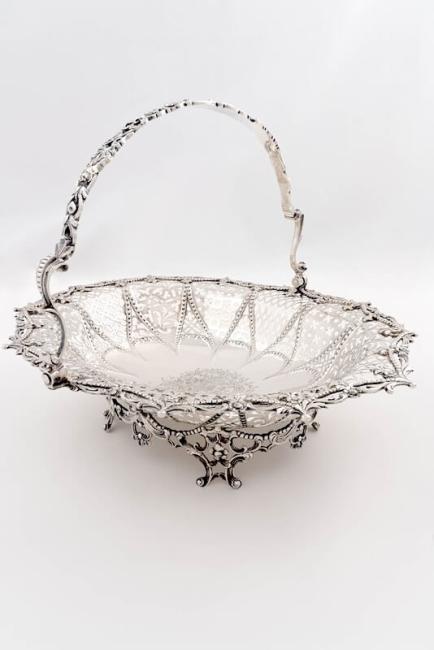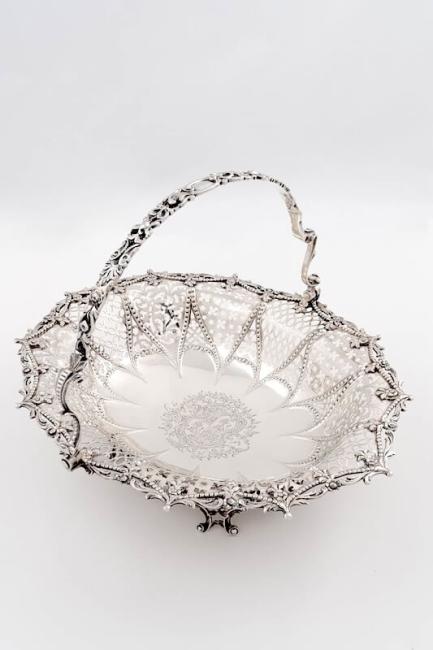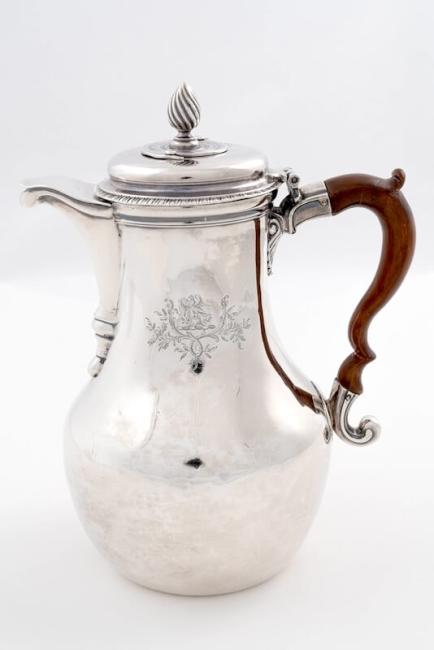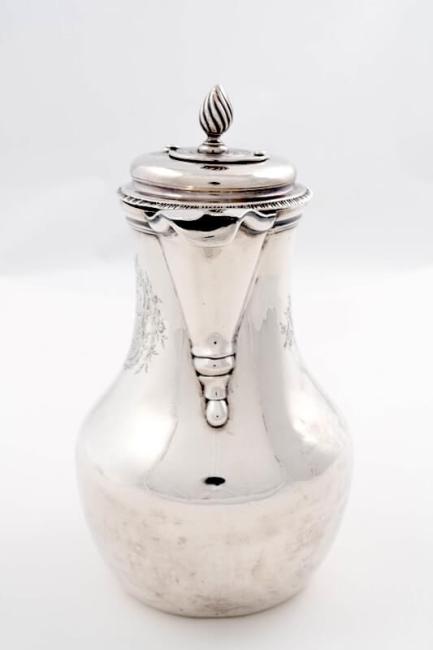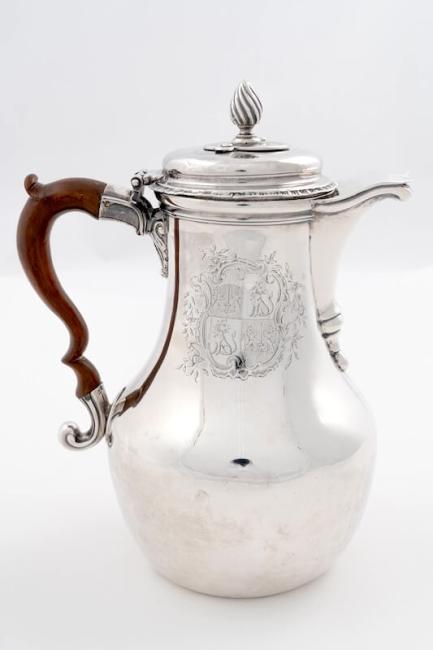The dining room features furniture, sterling silver, export Chinese porcelain, and crystal owned by the Carroll family. The molded arch supported by triple pilasters is the most elaborate example of original woodwork remaining in the house. The replica kitchen was created in 1960 and added to the museum after this wing served more than 50 years as the men’s bathhouse for the surrounding park. Courtesy of NSCDA-MD.
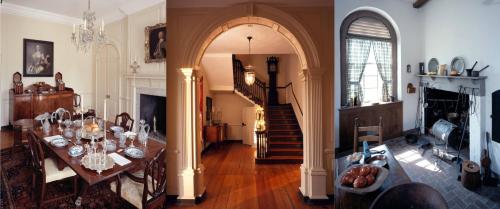
Decorative Arts Collection
The NSCDA-MD was given access to an empty house in 1917 to start a colonial house museum. Over the years, they have amassed a rare collection of 18th and 19th decorative arts, including a significant number of Carroll family pieces that were used in the house.
Dining Room Table
American Empire, Duncan Phyfe-style mahogany dining room table likely made by John Needles, a prominent Maryland furniture maker, Quaker, and abolitionist, circa 1815. Owned by James Maccubbin Carroll. Courtesy of NSCDA-MD.
Kitchen Table
Federal, cherry harvest table with a drop leaf made in either Maryland or Pennsylvania, circa 1800. Believed to have been owned by Margaret Tilghman Carroll. Courtesy of NSCDA-MD.
Game Table
Federal, carved and painted, flip-top game table with turned and tapered legs attributed to Hugh and John Finley, prominent Baltimore furniture makers, circa 1810. The miniature of Mount Clare in the center frieze is believed to have been painted by Francis Guy. Courtesy of NSCDA-MD.
Pie Crust Table
George III, carved mahogany, tilt-topped tripod table, circa 1770. It was likely ordered by the Barrister from his English agent in a letter dated February 24, 1767. Courtesy of NSCDA-MD.
Washington Mantel Clock
French Empire, ormolu mantel clock by Jean-Baptiste Dubuc, a Parisian clock maker, circa 1805. He was probably trying to capitalize on the fad for Washington memorabilia after the former president’s 1799 death. Dubuc used a phrase from Gen. “Light Horse Harry” Lee’s eulogy, “First in war, first in peace, and first in the hearts of his countrymen.” However, the first seven clocks -- including this one -- had a slight error, probably to save room, that said “first in his countrymen’s hearts.” These clocks were likely consigned to John Shaw, a cabinet maker in Annapolis who ordered additional, corrected clocks.
In 1824 General Lafayette bought similar clocks to present to his American friends during his celebrated tour of the United States during the country’s 50th anniversary. Courtesy of NSCDA-MD.
Cellerette
George III, Sheraton cellarette, or wine cooler, made of mahogany and brass. The zinc-lined interior was packed with ice that would drip through a hole into a bucket below. The Barrister likely ordered in a September 1760 letter to his London agent William Anderson. Courtesy of NSCDA-MD.
Pewter Dishes
Pewter platter and plate with the Gough family crest on the flat rim. This is part of a 20-piece set believed to be a wedding gift to Sophia Gough, from her father Harry Dorsey Gough, when she married James Maccubbin Carroll. Courtesy of NSCDA-MD.
Punch Bowl
Rose medallion Chinese export punch bowl, circa 1825. The central medallion and side panels depict domestic scenes. This is believed to have been owned by either James Maccubbin Carroll or his son James Carroll. Courtesy of NSCDA-MD.
China
Red and Blue Chinese export platter, part of a large set used by the Barrister and Margaret Tilghman Carroll. It may be the “4 dozen Burnt China Plates” ordered by the Barrister from London on May 23, 1759. According to family lore, the Barrister used it for a gala dinner honoring General Lafayette and other French officers after the Battle of Yorktown. Courtesy of NSCDA-MD.
Ginger Jars
Chinese Canton blue and white ginger jars, circa 1780. This pair belonged to Lt. Col. Tench Tilghman, who married his first cousin, Anna Maria Tilghman, Margaret’s younger sister. Courtesy of NSCDA-MD.
Silver Punchbowl
George III, silver punch bowl with lions head and ring handles linked by laurel swags and rosettes. Engraved with the Carroll and Tilghman family crests and believed to have been purchased by the Barrister and Margaret during their 1771 trip to London. Courtesy of NSCDA-MD.
Epergne
George III, silver epergne with boat-shaped open basket, eight arms holding four small baskets and four small trays. Made in London, 1763. This was not a Carroll family piece, but comes from Padworth House, a 1769 house now serving as a college in West Berkshire, England. Courtesy of NSCDA-MD.
Silver Teapot
Silver teapot made in Baltimore by A.E. Warner in 1819 for Harry Dorsey Gough Carroll, the son of James Maccubbin Carroll and Sophia Gough. Courtesy of NSCDA-MD.
Silver Chocolate Pot
George III, silver chocolate pot with wooden handle and a quartered coat of arms for both the Carroll and Tilghman families. Made in London by Thomas Whipmam & Charles Wright, circa 1765. The Barrister probably ordered it from Mr. William Anderson in an October 24, 1764, letter.

